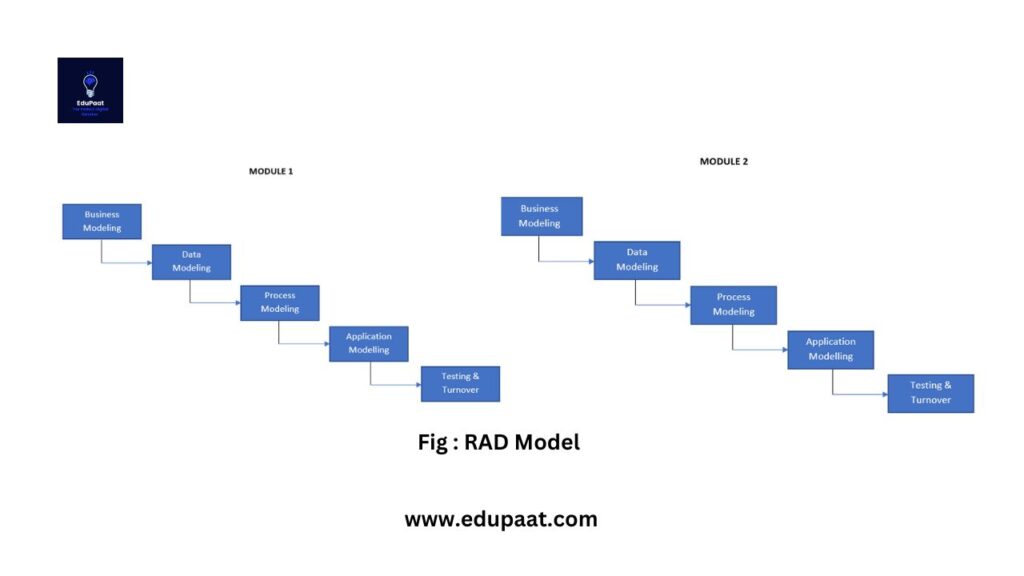RAD Model : RAD stands for Rapid Application Development. RAD model is another SDLC model which focuses to create application within less time usually 2 to 3 months. in this model, product get released at the earliest because of :
- Quick prototyping
- Iterative development
- Incremental release.
- User involvement
- Parallel development
- Time boxing

Phases of RAD Model
- Business Modelling : In this Phase of RAD Model, Roles of all the users, Data & Tools required to Develop the Application get specified. All the questions get answered like Who Generates data, what type of data will get generated, and who will process the same.
- Data Modelling : The data collected from business modelling is get converted into different – different entities and the relation between different entities get defined.
- Process Modelling : The information got from Data Modelling will get transformed achieve the data flow necessary to implement a business function.
- Application Modelling : Automated tool or Platform for coding is used for Development/Generation of Application Development.
- Testing & Turnover : Last Phase of this model is Testing & Turnover. In this phase, Testing of whole system get done and it takes less time because all the components are already get tested.
Uses of RAD Model
- When the system requirement is already known.
- When Risk is less.
- This model is used when we have to develop the software within less time usually 2-3 months.
Advantages of RAD Model
- It is Flexible to change.
- Each Phase gives a new functionality to the users.
- At every module completion, Customer feedback is taken.
- Reusability is system increases.
Disadvantages of RAD Model
- Used for only small Projects.
- It required Experienced or skilled team members.
- At every phase, it required customer involvement for feedback.


